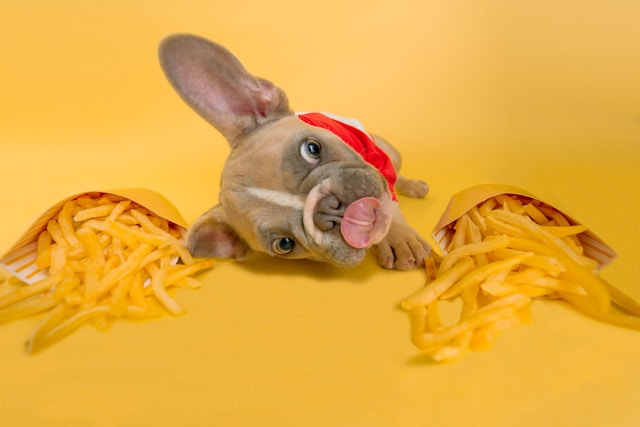The Dos and Don’ts of Feeding Your Dog a Nutritional Diet

Feeding your dog the right diet is crucial for their overall health and well-being. With so much information available, it can be challenging to determine what’s best for your furry friend. This comprehensive nutritional guide will walk you through the dos and don’ts of feeding your dog, helping you make informed decisions that promote their health and happiness.
The Dos of Feeding Your Dog
1. Do Provide a Balanced Diet
A balanced diet is essential for your dog’s health. Ensure their food contains the right proportions of protein, carbohydrates, fats, vitamins, and minerals. High-quality commercial dog foods are formulated to meet these needs, but if you choose to prepare homemade meals, consult your veterinarian or a pet nutritionist to ensure the diet is complete and balanced.
2. Do Choose the Right Food for Your Dog’s Age and Size
Different life stages and sizes require different nutritional needs:
- Puppies need a diet high in protein and calories to support their growth and development.
- Adult dogs require a balanced diet to maintain their health and energy levels.
- Senior dogs may benefit from lower-calorie diets with joint support supplements.
Select a dog food that is specifically formulated for your dog’s life stage and size.
3. Do Measure Portions Carefully
Overfeeding can lead to obesity and related health issues, while underfeeding can cause malnutrition. Follow the feeding guidelines provided on your dog food packaging and adjust based on your dog’s activity level, age, and weight. Use a measuring cup to ensure accurate portions and avoid free-feeding, which can lead to overeating.
4. Do Offer Fresh Water Daily
Always provide fresh, clean water for your dog. Proper hydration is crucial for digestion, nutrient absorption, and overall health. Ensure your dog has constant access to water and refill their bowl regularly.
5. Do Incorporate Variety in Their Diet
Variety can prevent your dog from getting bored with their food and can help ensure they receive a range of nutrients. Rotate between different high-quality dog foods or add safe, dog-friendly vegetables and fruits as occasional treats. However, any changes to their diet should be gradual to avoid digestive issues.
6. Do Monitor Your Dog’s Weight and Health
Regularly monitor your dog’s weight and overall health. If you notice any changes in their appetite, weight, coat condition, or energy levels, consult your veterinarian. They can help assess whether adjustments to their diet are needed.
7. Do Consider Special Dietary Needs
Some dogs have special dietary requirements due to health conditions such as allergies, diabetes, or kidney disease. Consult with your veterinarian to determine the best diet for your dog’s specific health needs and follow their recommendations for any special dietary restrictions.
The Don’ts of Feeding Your Dog
1. Don’t Feed Your Dog Human Food
Human foods can be harmful or toxic to dogs. Avoid feeding your dog foods like chocolate, grapes, onions, garlic, and caffeine. Even common foods like bread and fatty meats can cause digestive issues or lead to obesity. Stick to dog-specific treats and food to ensure their safety.
2. Don’t Overfeed or Undereat
Both overfeeding and underfeeding can lead to health problems. Overfeeding can cause obesity, while underfeeding can lead to malnutrition. Follow the feeding guidelines for your dog’s size, age, and activity level and avoid making sudden changes to their diet.
3. Don’t Skip Regular Meals
Consistency is key to maintaining your dog’s health. Avoid skipping meals or irregular feeding times, as this can lead to digestive issues and behavioral problems. Establish a regular feeding schedule and stick to it.
4. Don’t Feed Bones from Cooked Meat
Cooked bones, such as those from chicken or pork, can splinter and cause choking or damage to your dog’s digestive tract. If you want to give your dog a bone, opt for specially designed chew toys or raw bones recommended by your veterinarian.
5. Don’t Ignore Food Allergies or Intolerances
If you suspect your dog has food allergies or intolerances—evidenced by symptoms such as itching, vomiting, or diarrhea—don’t ignore it. Consult with your veterinarian to identify the problem and find an appropriate diet that avoids allergens or triggers.
6. Don’t Use Food as a Reward for Behavior
Using food as a reward can lead to overeating and weight gain. Instead, use non-food rewards like praise, toys, or extra playtime. If you do use treats, ensure they are healthy and given in moderation.
7. Don’t Neglect Dental Health
Diet plays a role in dental health. Avoid feeding your dog sugary or sticky foods that can contribute to dental issues. Incorporate dental chews or toys into their routine to help maintain oral hygiene. Regular dental check-ups with your veterinarian are also important.
Additional Tips for a Healthy Feeding Routine
**1. Consult Your Veterinarian Regularly Regular check-ups with your veterinarian can help ensure your dog’s diet is meeting their needs and that any health issues are addressed promptly. Your vet can offer tailored advice based on your dog’s health, age, and activity level.
**2. Read Food Labels Carefully Understand what’s in your dog’s food by reading labels. Look for high-quality proteins, healthy fats, and avoid foods with excessive fillers or artificial additives. Choose brands that meet AAFCO (Association of American Feed Control Officials) standards.
**3. Avoid Sudden Diet Changes If you need to switch your dog’s food, do so gradually to prevent digestive upset. Mix the new food with the old food over a period of about a week, gradually increasing the proportion of the new food.
**4. Store Food Properly Store your dog’s food in a cool, dry place to maintain its freshness and nutritional value. Keep the food sealed in its original packaging or an airtight container to prevent spoilage and contamination.
**5. Use Portion Control Tools Consider using tools like portion control bowls or automatic feeders to help manage your dog’s food intake and maintain a consistent feeding schedule. These tools can help prevent overeating and make feeding easier.
Conclusion
Feeding your dog the right diet is crucial for their health, longevity, and quality of life. By following these dos and don’ts, you can ensure your furry friend receives the nutrition they need while avoiding common pitfalls. A balanced diet, proper portion control, and attention to their unique needs will contribute to a happy, healthy, and well-nourished dog. Remember to consult with your veterinarian regularly to keep your dog’s diet in check and address any health concerns.




